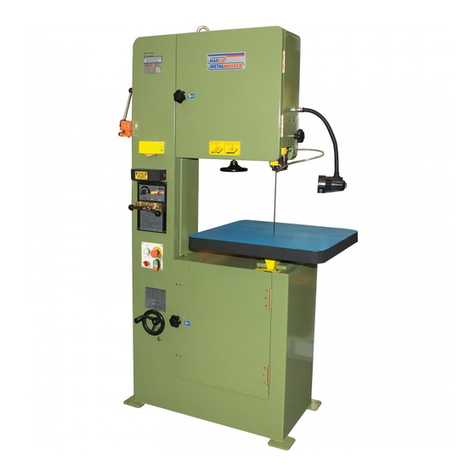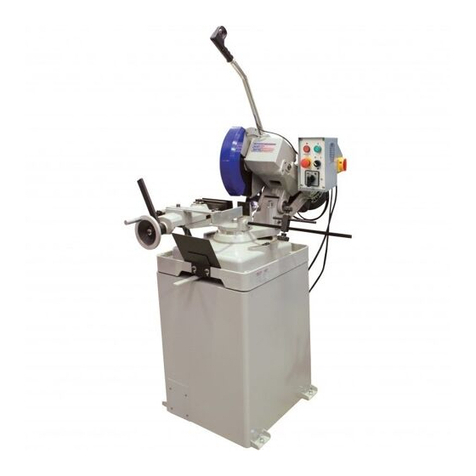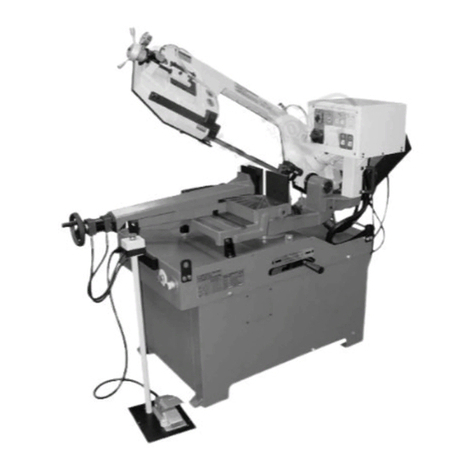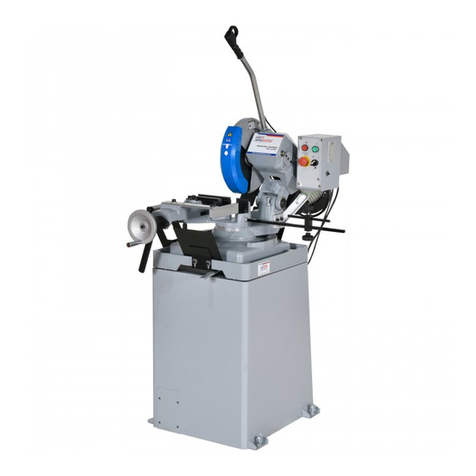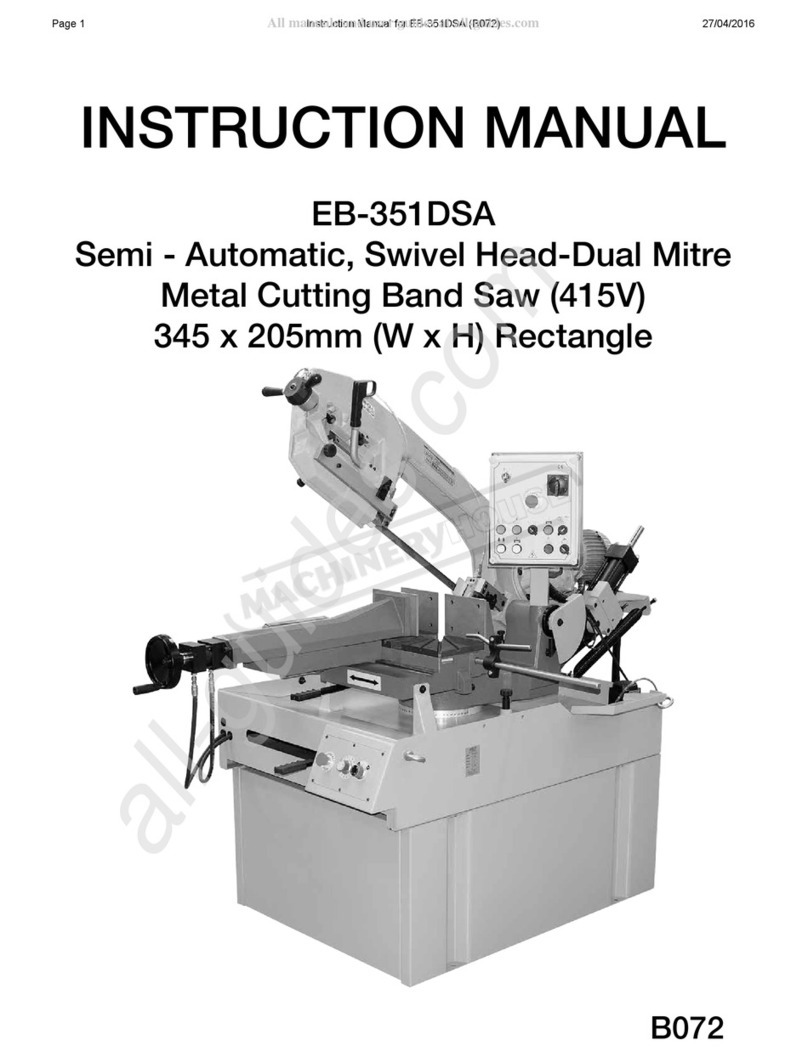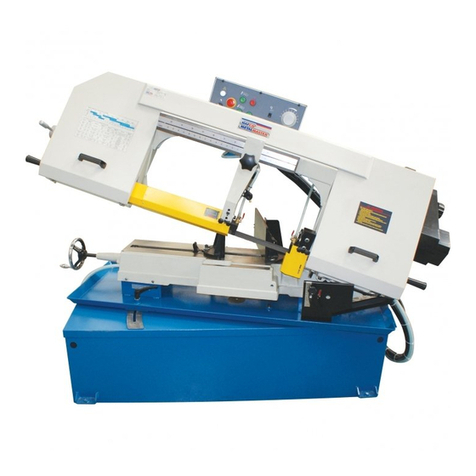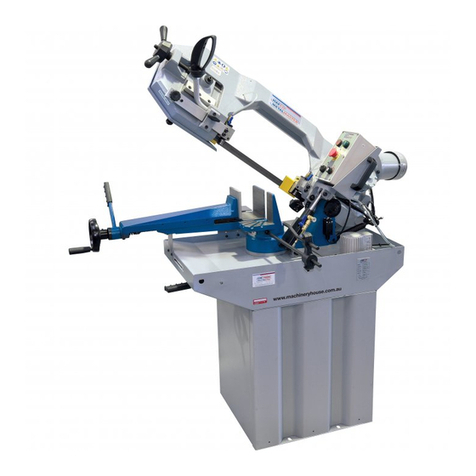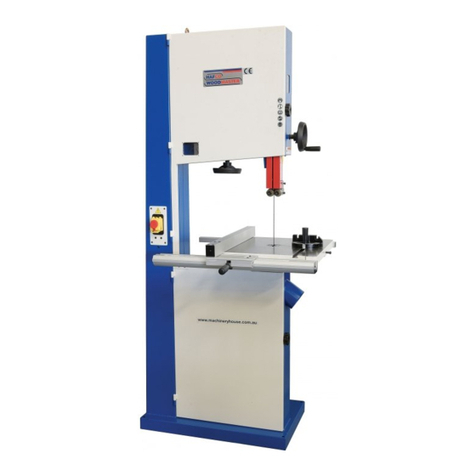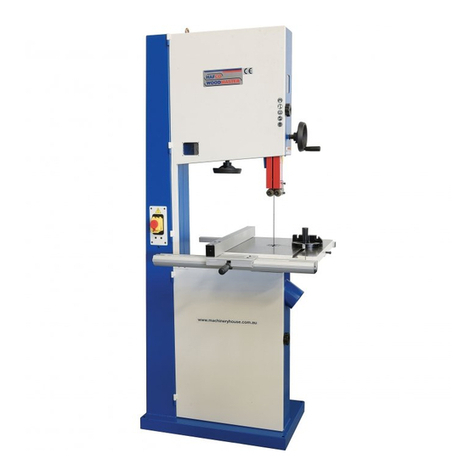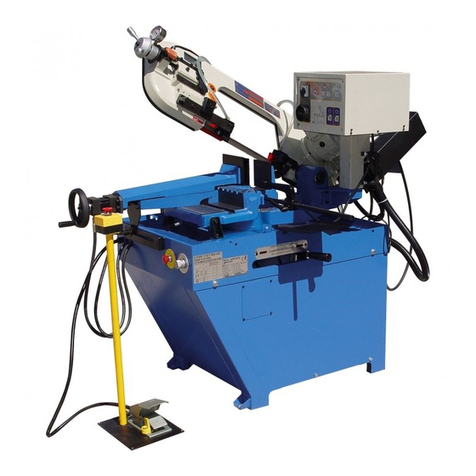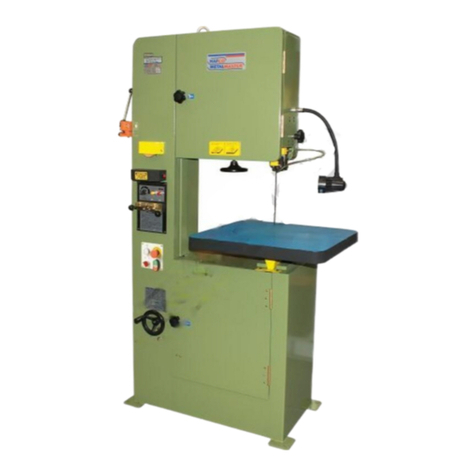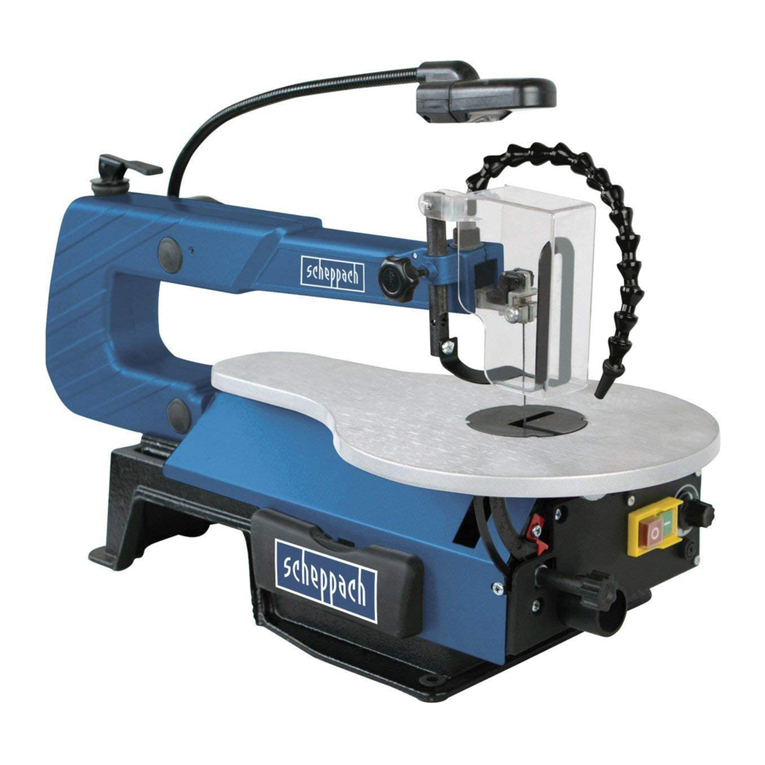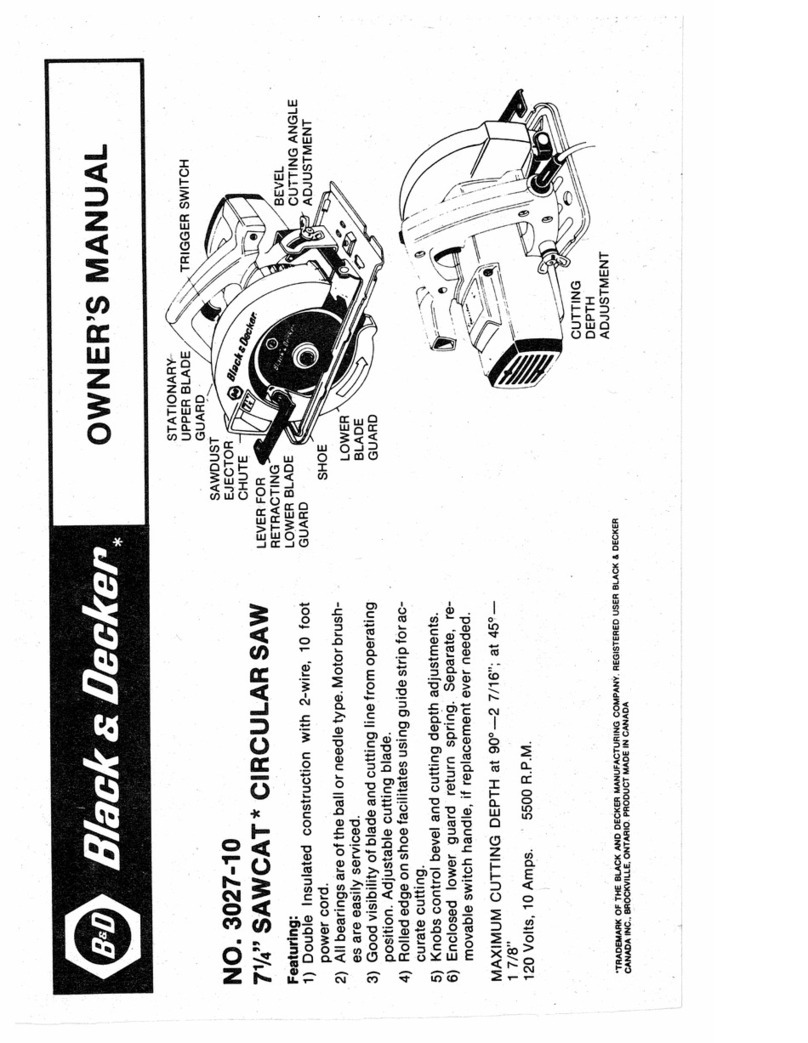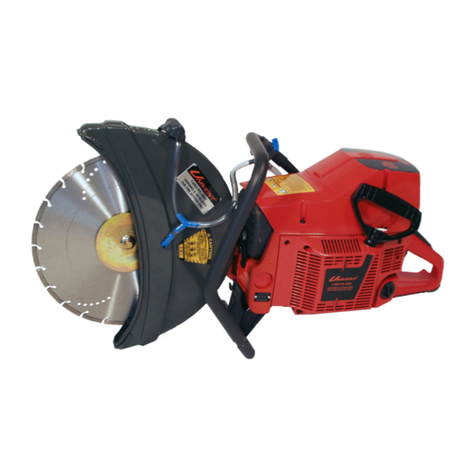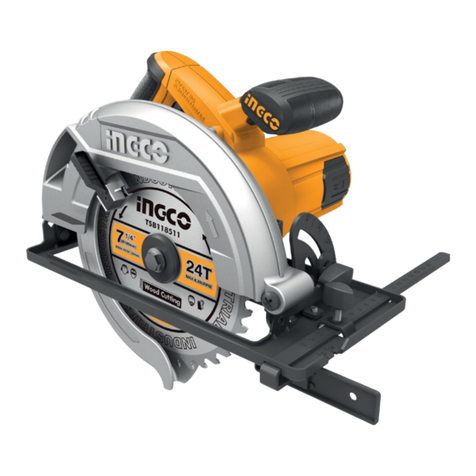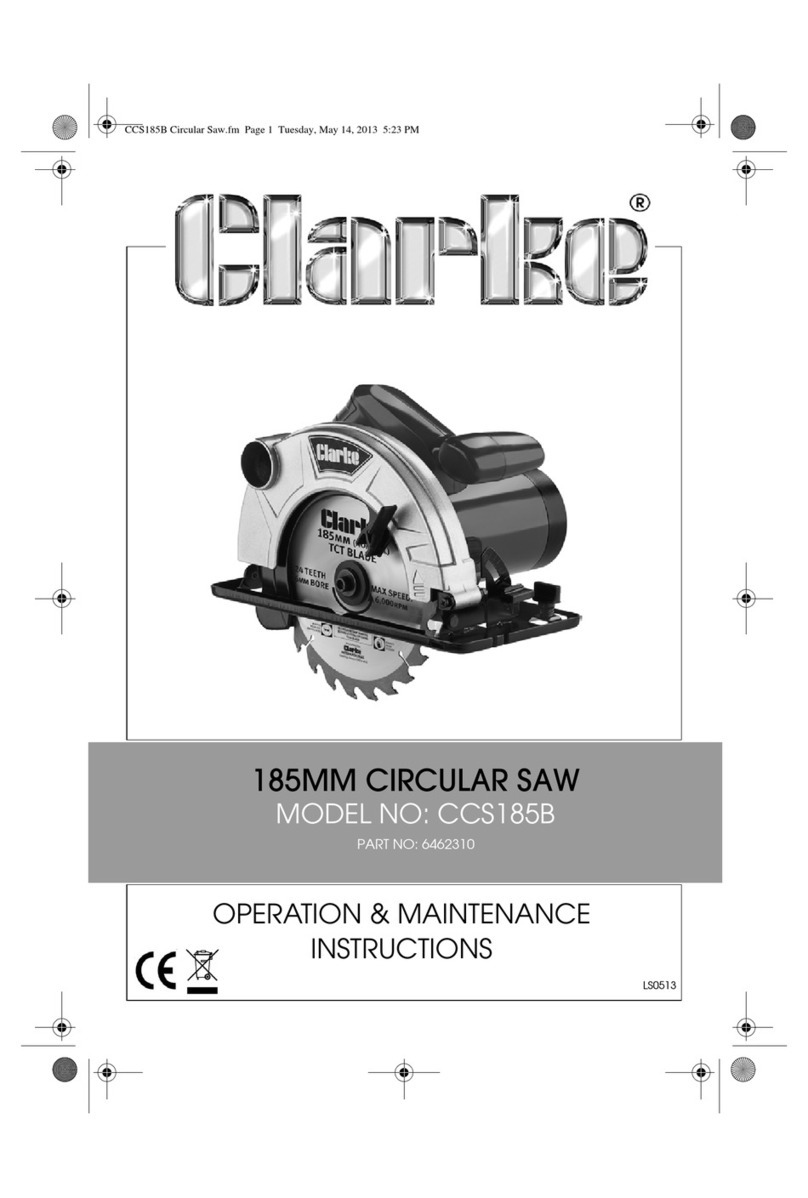
2
3.1 Specified conditions of use
•This machine is intended to rip and crosscut
grown timber, faced boards, chip board and
wood-core plywood sheets, and similar wood-
derived materials.
•Do not cut round stock without suitable jigs or
Þxtures. The rotating saw blade could turn the
workpiece.
•When sawing thin stock layed on edge, a
suitable guide must be used for Þrm support.
Use of wobble saw blades is not permitted on
this machine.
Danger! Any other use is not as speciÞed.
2. Please Read First!
•4 Read these instructions before use. Pay
special attention to the safety instructions.
• Do not operate the saw if you notice transport
damage while unpacking! Notify your supplier
immediately.
• Dispose the packing in an environmentally
friendly manner. Take to a proper collecting
place.
• Keep these instructions for reference on any
issues you may be uncertain about.
• If you lend or sell this machine, be sure to
have the instructions go with it.
3. Safety
•Use not as speciÞed, alteration of the saw or
use of parts that are not approved by the
equipment manufacturer can cause
unforeseeable damage!
3.2 General safety instructions
•Observe the following safety instructions when
operating this table saw, to exclude the risk of
personal injury or material damage.
•Observe the special safety instructions in the
respective chapters. Keep all enclosed
documents for future reference.
•Observe the statuary accident insurance
institution regulations and regulations for the
prevention of accidents pertainning to the
operation of table saws, where applicable.
General Hazard!
•Keep your work area tidy – a messy work area
invites accidents.
•Be alert. Know what you are doing. Set out to
work with reason. Do not operate the saw
under the inßuence of drugs, alcohol or
medication.
•Consider environmental conditions.
•Keep work area well lighted.
•Prevent adverse body positions. Ensure Þrm
footing and keep your balance at all times. Use
suitable workpiece supports when cutting long
stock. Do not operate the saw near
inßammable liquids or gases.
•The table saw shall only be started and
operated by persons familiar with it, and who
are at any time aware of the dangers
associated with the operation of such tool.
•Persons under the age of 18 years shall
operate the saw only in the course of their
vocational training, under the supervision of
an instructor.
•Keep bystanders and particularly children out
of the danger zone. Do not permit other
persons to touch the saw or power cable while
it is running.
•Do not overload the saw – use it only within
the performance range it was designed.
Danger! Risk of electric shock!
•Do not expose the saw tool to rain.
•Do not operate the saw in damp or wet
environment.
•Prevent body contact with earthed objects
such as radiators, pipes, cooking stoves,
refrigerators when operating this saw.
•Do not use the power cable for purposes it is
not intended for.
Risk of personal injury and crushing by
moving parts!
•Do not operate this machine without installed
guards.
•Always keep sufÞcient distance to this saw.
Use suitable feeding aids, if necessary.
•Keep sufÞcient distance to motor and driven
components when operating this machine.
Insure it is disconnected from power supply
before servicing.

